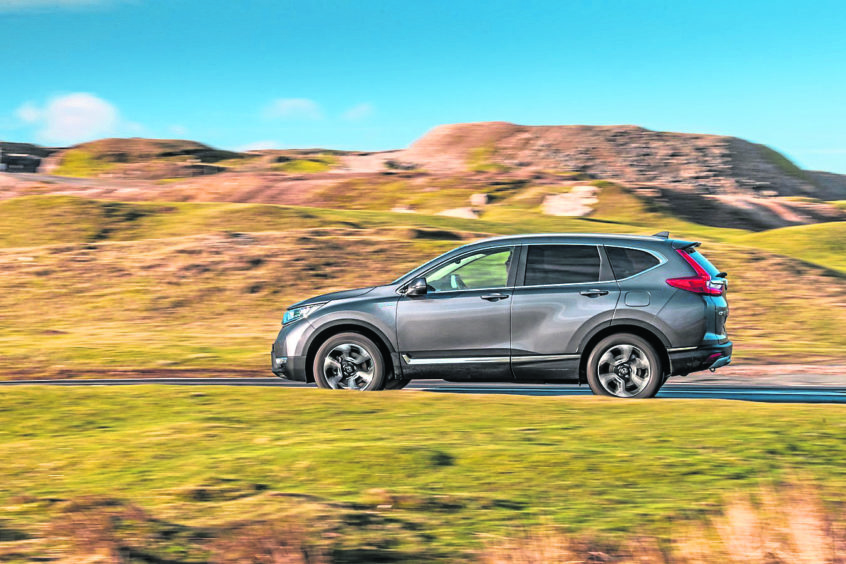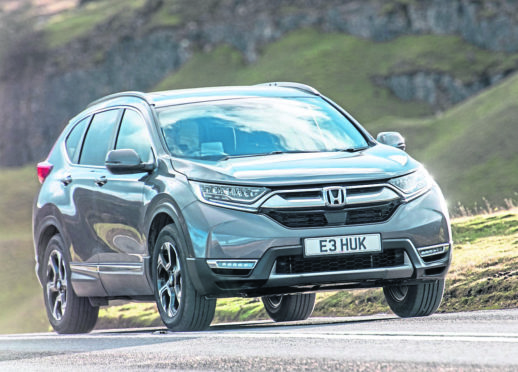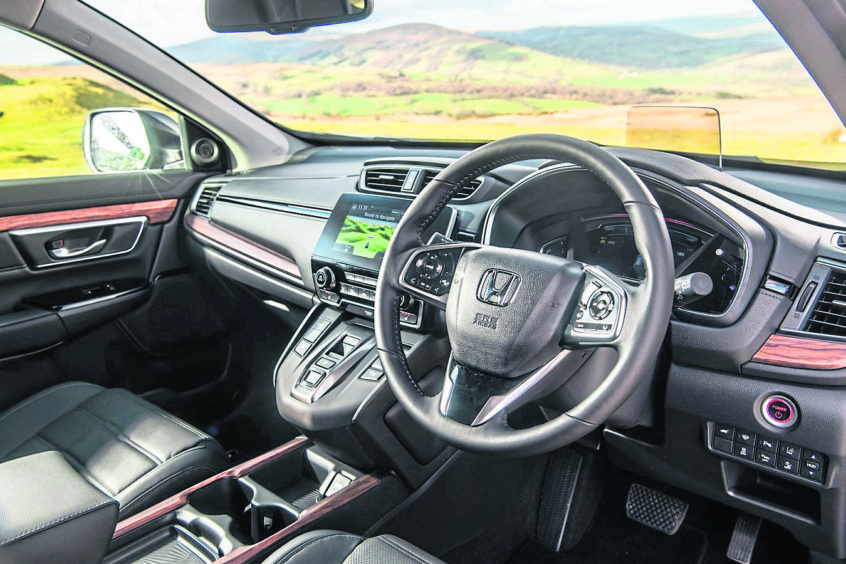The popular Honda CR-V is back in its fifth-generation guise and Alan Douglas is impressed by the latest instalment
What do you reckon is the world’s best-selling SUV? The Range Rover, one of the Koreans, like the Kia Sportage, the Toyota RAV4 or maybe one of the Fords, like the Kuga?
If you thought of any of those you are wrong. The answer is one of the first to appear on the British market, the Honda CR-V, which has been with us for no less than 24 years.
The latest version is the fifth generation of the model and is the first to come as a hybrid, combining an electric powertrain with a petrol engine for lower emissions and better economy.
In typical Japanese style, it stands for Comfortable Runabout Vehicle – quite an understatement for a very fine machine which is indeed very comfortable but far more than a simple runabout.
It looks similar to the previous model, with a familiar silhouette, but has been beefed up with a longer wheelbase and wider wheel arches to make it look more muscular and athletic and give it a more significant road presence.
Both the front and rear ends have been given a stronger look as well and the changes have resulted in more advanced aerodynamics, helped by an active shutter grille that closes for better efficiency but opens again when needed for cooling if things start to warm up.
Under the surface, there’s a lighter yet stronger chassis along with improved suspension that helps with dynamics on the road and boosts this car from a run-of-the-mill runabout to something that returns a fun drive with a bit of zip along the way.
A 1.5 litre petrol VTEC turbo engine has been around for a little while but the latest, more interesting option is the Hybrid i-MMD, which stands for Intelligent Multi-Mode Drive and gives three driving settings.
EV Drive uses the lithium- ion battery to supply power to the electric motor directly but gives only just over a mile or so of pure electric power.
What’s more effective is Hybrid Drive, where the two-litre petrol engine acts as a generator supplying power to an electric generator motor, which both tops up the battery and powers another motor connected to the driving wheels.
The third setting is the conventional petrol Engine Drive, where the engine is connected directly to the wheels through a lock-up clutch but that really only comes into operation under hard acceleration.
The settings all combine to result in lower emissions and improved economy, even when all four wheels are being powered. There’s plenty of power and performance is nicely refined through the smooth-change CVT transmission, and it’s quiet, comfortable and relaxing.
 It’s also a very practical car, especially for family use. Leg, head and hip room has been increased over the previous model, which makes it much more spacious for passengers than some of its competitors, like the Ford Kuga or VW Tiguan.
It’s also a very practical car, especially for family use. Leg, head and hip room has been increased over the previous model, which makes it much more spacious for passengers than some of its competitors, like the Ford Kuga or VW Tiguan.
The underbody technology for the Hybrid version has forced a slight reduction in the boot space over the conventional petrol model but it’s still got useful capacity and the opening is nice and wide with a handy square floor. The test car also had a hands-free powered tailgate with a foot-operated motion sensor.
In the cockpit, there’s a strong sense of quality in the build and materials used and stacks of technology are included as soon as you move up from the base model. The test car was the top-of-the-range EX with four-wheel-drive and included electric seats all round, an opening panoramic glass roof, head-up display and tasteful ambient lighting; of course, that bumps up the price to not far off £40,000.
The new CR-V Hybrid is impressive but its launch comes almost at the same time as a very good rival from Toyota. Its RAV4 Hybrid uses a similar system but is slightly cheaper with lower emissions, more power and greater tax savings.
Both are capable, well-built and stylish with all the latest technology. It all comes down to what badge you want on the front.

